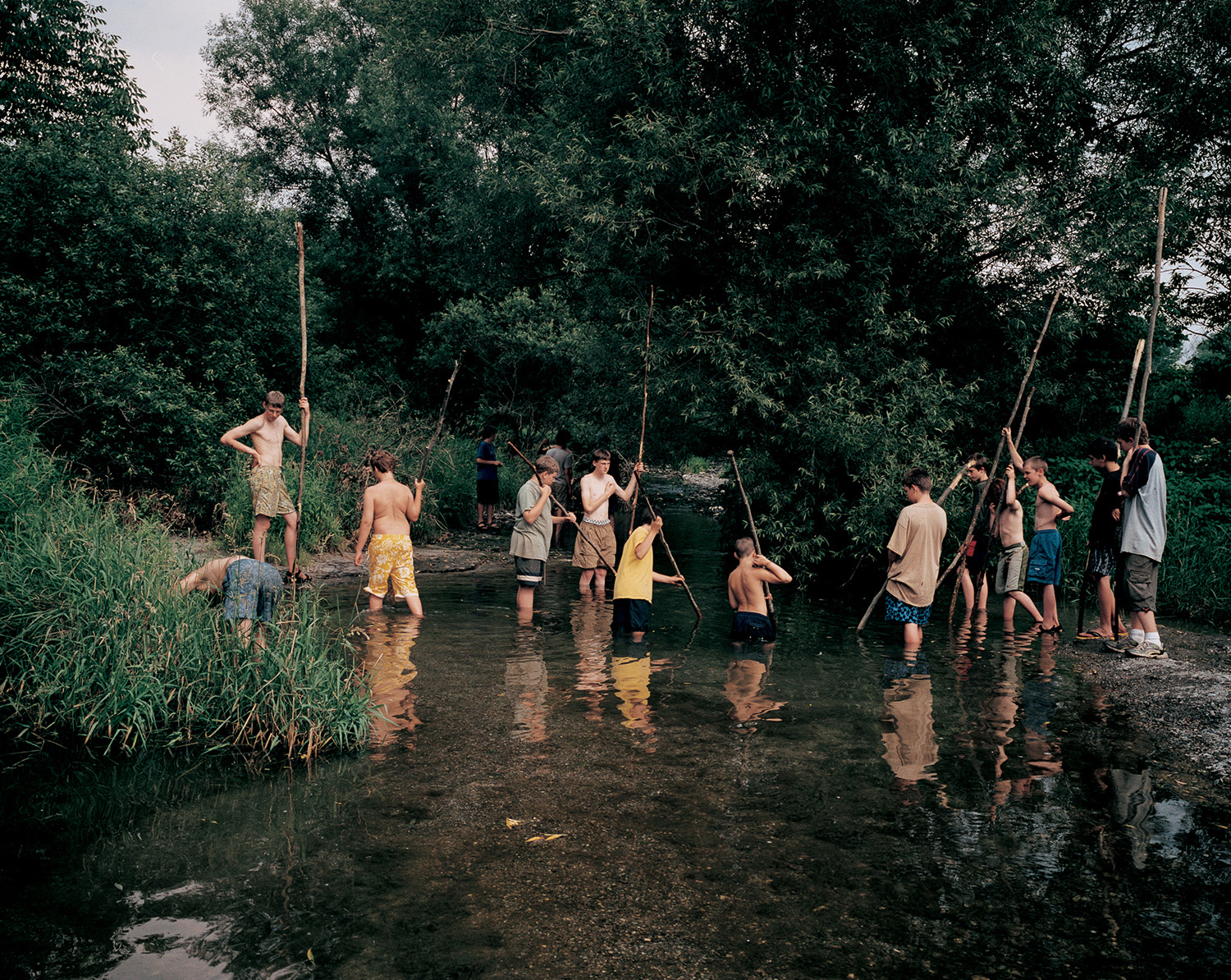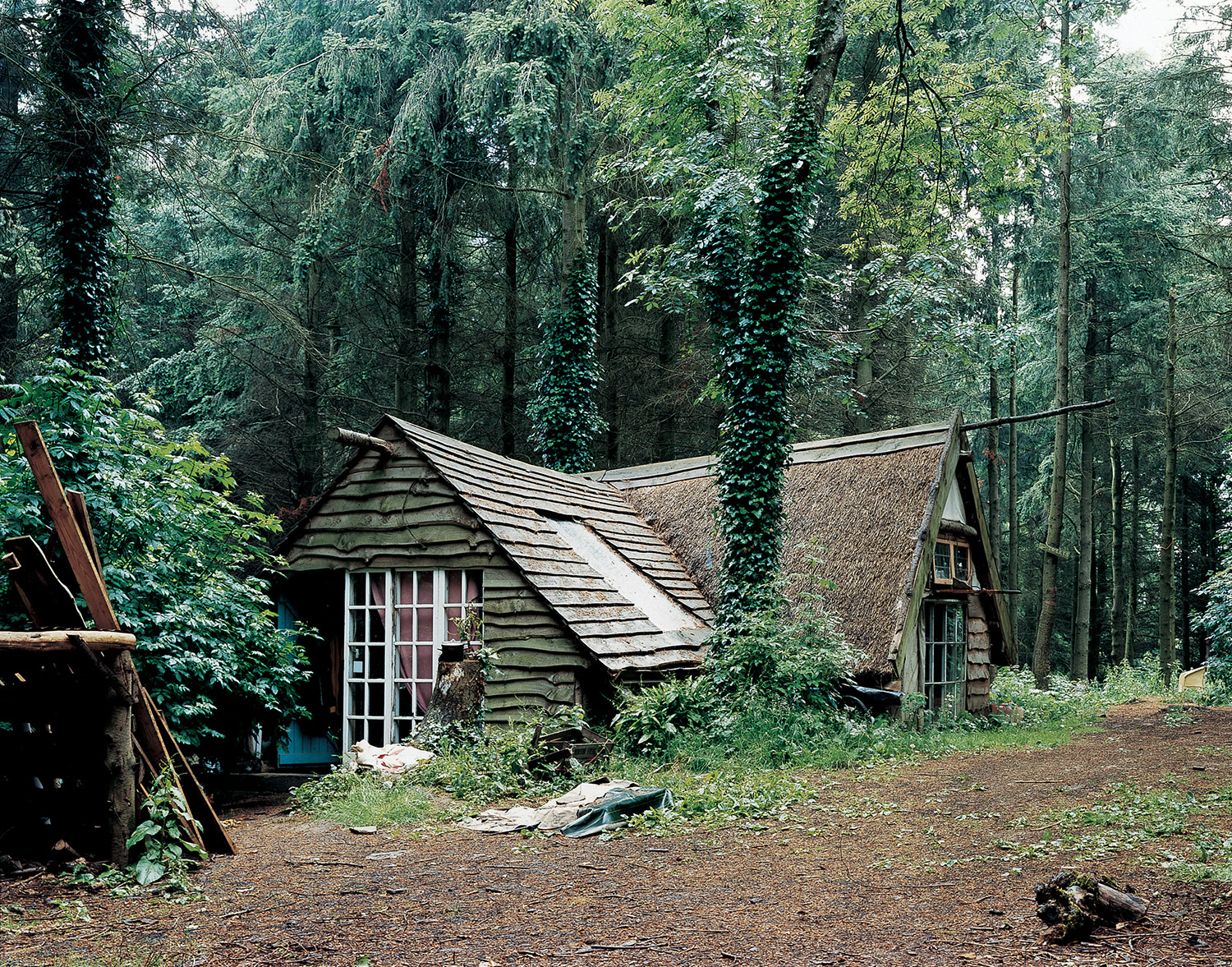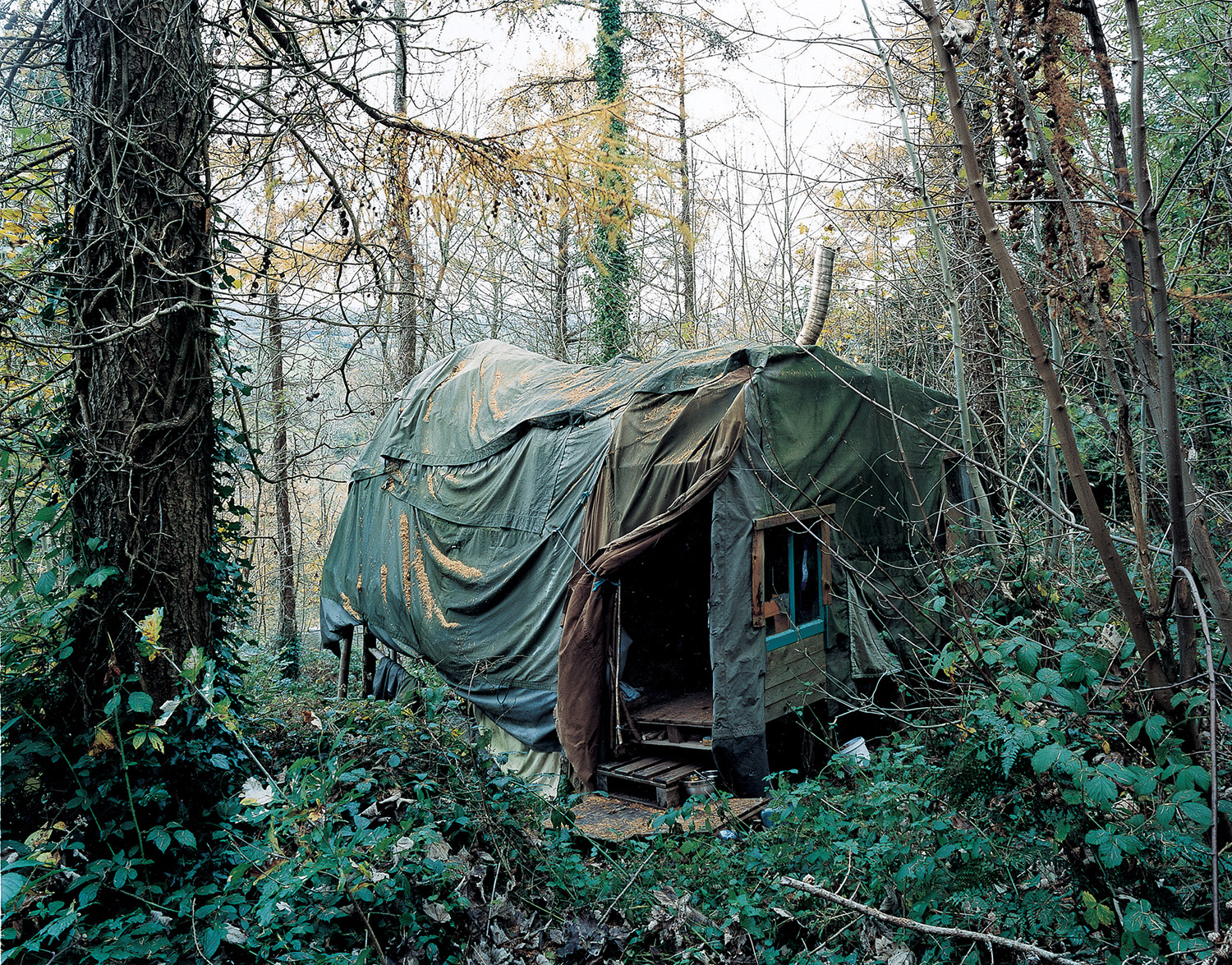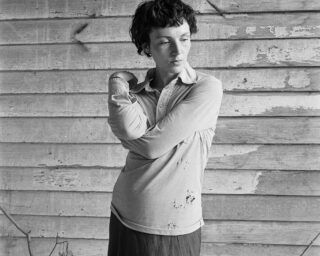Dreamlike Photographs of Life Among the Trees

Clare Richardson, from the series Harlemville, 2000
Courtesy the artist
From its inception, photography has been a bearer of conscience. Long before the traditions of reportage or “concerned” photography emerged, the medium’s capacity to produce an afterimage of reality meant that the past could persist into the present. Instantly invoking nostalgia, these fragments of the has-been reproach the complacency of the here and now. As early beholders of daguerreotypes intuited, there is an uncanny relation of past to present through photography. Photographer Karl Dauthendey commented: “We didn’t trust ourselves at first to look at the first pictures he [Daguerre] developed. We were abashed by the distinctness of these human images, and believed that the little tiny faces in the picture could see us, so powerfully was everyone affected by the unaccustomed clarity and the unaccustomed truth to nature of the first daguerreotypes.”
Yet if a century and a half on we have outgrown (or at least suppressed) that instinctive reaction, photographs still remind us of the contingency of our present. Forwarded across space and time, these emanations create a ripple in our consciousness. And since in front of the intractable stillness of a photograph it is we who undergo change, it is perhaps no exaggeration to say that photographs behold us, at least to the same degree that we behold them.

Clare Richardson, from the series Harlemville, 2000
Courtesy the artist
Over the years, photographers have harnessed this principle of mutual regard in various ways. The genres of photojournalism and socially engaged photography customarily depict a fractured world in order to prod the viewer’s conscience. But this is not the only way the medium can steer our emotional and moral outlook in new directions. Recently, as disenchantment with contemporary ways of living and anxieties about impending environmental catastrophes continue to grow, a handful of photographers have discovered a new brand of romanticism, turning their attention–and by extension ours–to various arcadias, in particular those that would lead us back toward a promised land.
For her series “Harlemville” (2000), the young British photographer Clare Richardson spent several months over a period of two years with a Rudolf Steiner community in upstate New York. Founded by refugees from late twentieth-century capitalism, Harlemville is a town where every attempt is made to live in harmony with nature. As part of the Steiner educational philosophy, children are sent into the woods in order to experience and understand the continuum that must exist between the environment and the self. Their immersion in the natural world is the focus of Richardson’s series.

Clare Richardson, from the series Harlemville, 2000
Courtesy the artist
Unlike many other recent bodies of work that have taken adolescence as their theme, these photographs portray this purportedly troubled period of life as a time of wonder, growth, and serenity. Richardson ‘s approach is observational, as though her subjects are unaware of her presence. She manages to achieve an intimacy with her subjects that surpasses simple candor. Looking at the images of Harlemville, the viewer is linked in a chain of empathy that seems to invite us to become part of the picture.
In one photograph, a group of boys stand in a river, bathed in Edenic sunshine. Their fishing spears are at the ready, their faces a picture of concentration. In another image, we see a boy in the water by a riverbank, his eyes closed and head framed by the roots of a tree. He seems almost to be dreaming nature into existence. In these, as in many of the other images, the audience is privy to more than just the secret world of childhood: Richardson’s sensibility allows us to enter into the youths’ rapt absorption and apparent oneness with their surroundings.
Laughter features little in “Harlemville,” but if the pictures are full of seriousness it is because they are above all works of feeling. Joel Sternfeld’s recently published project Sweet Earth looks at various instances of utopian communities in America with an ironic, distancing eye; Richardson, by contrast, is not in the least bit interested either in setting things into a historical perspective or in creating a conceptual framework for her work. Rather, her photographs are charged with the same idealistic sentiments that they describe.

David Spero, Mary and Joe’s, Tinker’s Bubble, Somerset, June 2004
Courtesy the artist
At the heart of “Harlemville” lies the notion of sustainability, not just in today’s common ecological understanding of the term, but in a deeper holistic way as well. This is a body of work that, in both content and form, would offer us moral and emotional sustenance. It provides a glimpse into a different way of life, one that exhorts us to pay humble attention to nature instead of being locked into a system that constantly obliges us to conquer and destroy it––and thus ultimately ourselves, too.
Many of the same ideas underlie “Settlements,” a project by British photographer David Spem, who has spent nearly three years taking pictures of environmentally “low-impact” communities in the forests of England and Wales. Although shot in an objective, almost Becheresque manner, Spero’s photographs are as much an expression of sentiment as is “Harlemville.” As its name implies, “Settlements” is a document of the dwellings that comprise these outposts of idealism. Their inhabitants hardly feature: the photographer feels that it is the structures themselves that best portray the back-to-the-land ideology that led to their creation.

David Spero, Cheryl’s, Steward Community Woodland, November 2004
Courtesy the artist
Looking at pictures such as Emma and John’s, Tir Ysbrydol (Spiritual Land), Brithdir Mawr, Pembrokeshire (2004), you can only wonder at how this human habitation with its turf roof and mud walls melds so perfectly with its surroundings. In another picture, The Longhouse, Steward Community Woodland, Devon (2004), we see how that building has almost disappeared into the adjacent trees. This seeming harmony between the natural and the man-made is one of the central themes that Spero tackles in this body of work. “I was particularly interested in the lightness of these structures and in how the world you build around you affects your relationship to the environment,” he explains. “It’s quite amazing how close to the environment these people actually are.”
Spero’s frontal approach and preference for flat, undramatic lighting lend his pictures a decidedly factual air. Yet even the everyday clutter––dirty dishes or log piles or pots heaped up beside the homes––does not disturb the apparent deeper unity depicted here. Instead, these mundane details seem to belong in the landscape, as though they are necessary preconditions for a realizable arcadia.

David Spero, Tony and June’s, Brithdir Mawr, Pembrokeshire, July 2005
Courtesy the artist
While such a tack is somewhat grittier than Richardson’s visual reveries, both “Settlements” and “Harlemville” envision a mythic wholeness that opposes what many of us understand to be humanity’s current fractured condition.The search for a lost Eden, or for a promised land, is as old as civilization. Here it is updated using the magic of photography, whose close contact with reality tends to brand the myths it depicts with the stamp of veracity. When treated in other media–in painting, say–the theme of arcadia is likely to remain an idle if agreeable daydream. When represented in photographs, it becomes a vision of something possible. And so, however partial and to varying degrees romantic Richardson’s and Spero’s portrayals of their rustic idylls may be, they contain an incontrovertible dimension of actuality that seems to indicate that they are something more than just useful fictions.
Traditionally, photographs have either berated or tantalized us with the unalterable, unrepeatable past. By picturing communities that have broken step with the mainstream march toward global doom, these two British artists have instead chosen to put potential futures on view, to similar effect. The numbers of people involved in Harlemville and in the forest communes of Britain may be few, and their attempts to establish tangible ecotopias may be fraught with problems. But the fact that these places exist at all is of no small symbolic importance. For like every utopia, they refute the inevitability of history. As we look around for models to keep us going now, and into the uncertain future, we could do worse than to follow the gaze of photographers such as Richardson and Spero. Their focus on the realized fantasies that these experimental communities represent might just prick us into turning away from our engineered existences, to seek a new life among the trees.
This piece was originally published in Aperture, issue 186, Spring 2007.


























